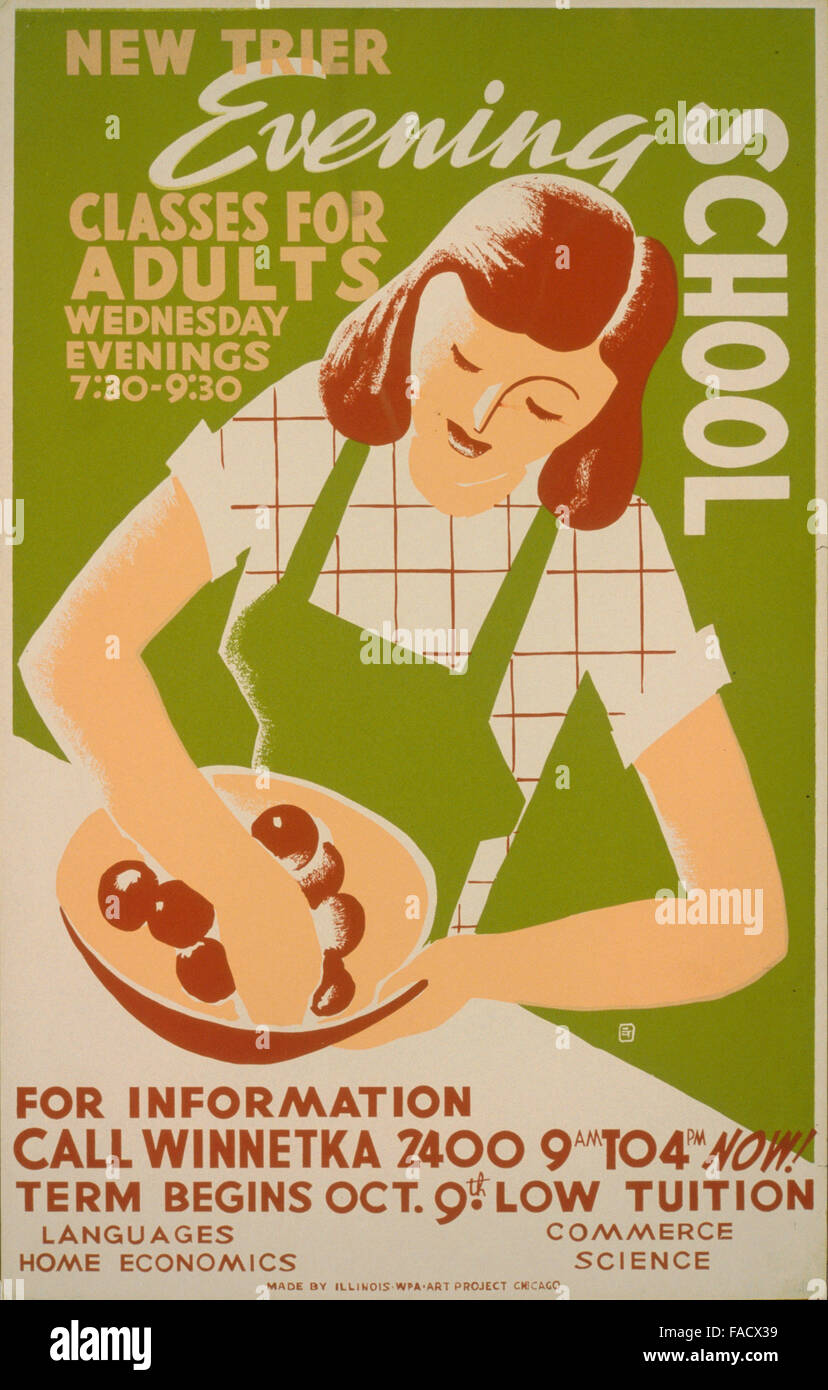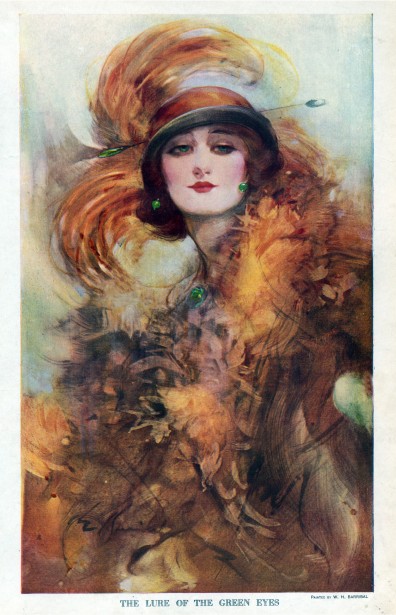Wikipedia, the most widely used encyclopedia on the world, consistently ranks among the web’s top sites and garners instant recognition among nearly all internet users. A related project—Wikimedia Commons, a source of free-use, public domain photos, video and other multimedia available to anyone—is less widely known, but essential for supplying multimedia content for Wikipedia articles.
Earlier this month, the Wikimedia Foundation (the umbrella organization for both of these wiki projects, as well as several others) began a landmark collaboration with the Smithsonian Institution when the Archives of American Art donated a trove of 285 WPA-era photographs to the Commons database.
“We’ve been interested in Wikipedia for years, but we didn’t really know how big the Foundation was and the efforts of the Commons until Sarah Stierch came on,” says Sara Snyder, an IT specialist at the Archives of American Art. Stierch became the Smithsonian’s first “Wikipedian-in-Residence” this summer at the Archives, as part of Wikimedia’s “GLAM” Project (Galleries, Libraries, Archives and Museums) that strives to increase the flow of information between these institutions and Wikimedia.
Design your everyday with wpa posters you'll love. They're unique, affordable and feature artwork from independent artists across the world. By Public Domain. Explore the WPA Poster Collection in this overview, which includes background information about the collection as well as options to search or “view all” of the digitized images. Read other Picture This blog posts featuring the WPA posters: Keep Mum: WPA Posters Do the Talking and New Deal in the New Year: WPA Posters on Flickr.
“She really opened our eyes to how many opportunities there are, not just editing articles, but being able to donate or share content on the Wikimedia platform through the Commons,” Snyder says.
The Archives team started out by trying to find a batch of photos without any intellectual property restrictions that would be appropriate for a donation. “The first thing we thought of was, ‘well, what do we have that’s public domain?’” says Stierch. “This collection was a clear candidate, because first of all, it’s really engaging, and it’s all created by the government, so its clearly in the public domain,” says Snyder.
The images donated are all part of the Archives’ collection of Works Progress Administration (WPA) photography, and this is the first time they are available to the public in a high-resolution, digitized format. The WPA was a Great Depression-era government program intended to provide relief for the unemployed. In addition to completing infrastructure and education projects, the WPA commissioned artists to produce paintings, murals and sculptures. Many of the photographs in the donation detail these activities, while others were creative assignments for exhibitions and photo murals.
“The different types of people and artists featured, it’s really remarkable,” says Stierch. “We’ve got photographs of works being created—showing the techniques of how to make a lithograph, how to make stained glass, how they sketch these giant murals. It’s a really varied collection of photographs, showing all different processes of art creation, documenting some of the most important as well as some of the lesser-known artists of the 20th century.”
As a collection of multimedia intended for unrestricted use, the Wikimedia Foundation anticipates these photos being used for anything from education to artistic inspiration.
“We hope that art students will look at these photographs and find inspiration in them. We hope that they’re going to be utilized in Wikimedia projects, whether its Wikipedia articles on these artists or anything else,” Stierch says. “If someone can find some educational or aesthetic or special value in these photographs, and I know they will, that’s what we hope comes out of it.”
Stierch and Snyder both envision this donation as the beginning of a long-lasting collaboration between the Wikimedia Foundation and the Smithsonian Institution. “There are 19 units of the Smithsonian, and a lot of those have photographs or images in their collections that are in the public domian, everything from dinosaur bones to WPA paintings,” Stierch says. “It all comes down to what is valuable for the public to be able to learn from.”
The Works Progress Administration (WPA) was created in 1935 under President Franklin D. Roosevelt’s New Deal aimed at putting unemployed Americans back to work on projects to improve the country during the Great Depression1. One particular branch of the WPA, the Federal Art Project was given the task of integrating the fine and practical arts into the everyday lives of Americans1. Mass produced posters were the main communication tool used to inform Americans on public health, education, travel, and many other areas of interest2. All told, the WPA artists created over 2,000 different poster designs and around 2 million posters were printed across the country1.
One of the areas that was heavily promoted through the WPA posters was library use. Like today, libraries represented an important supplement to the education system in place, but were not always used accordingly. These posters emphasized the importance of books, learning, book care, and other library services. Many of these posters have been digitalized by the Library of Congress and are available to use under Public Domain: http://www.loc.gov/pictures/collection/wpapos/
Artist: Arlington Gregg
As a whole, the WPA posters consistently carry a very positive promotional tone, depicting a kinder, gentler nation than many of the posters used in future decades2. Ennis Carter, creator of the WPA Living Archive notes the purpose of posters has not changed over the years, “the purpose of propaganda is to convey the value of specific ideas and to convince viewers to act in ways that support those ideas”2. The examples below emphasize the importance of book care and were created by the same artist, Arlington Gregg. You can see the simplicity of the design and the non-specific nature of the poster, making it useful in libraries of all types across the country.

Artist: Arlington Gregg
The focus on the “public good” dominates the themes and messages of WPA posters. From eating healthy, to getting vaccinations, the posters all extolled the virtues of ideal Americans. It is interesting to look at the role reading and libraries played in this system. As with the library posters from previous generations, many of the posters of this time simply promote reading in some form. This time period begins to offer some unique approaches to this message for individual groups of readers. The two posters below are examples of a new way to promote the familiar message. By tailoring the poster to students, these posters show one of the many possible audiences that future library posters would try to capture.
Artists: Unknown

Although the positive messages of the WPA posters would not last, their influence, particularly in artistic style, is still evident today. Many of the early National Library Week posters have an artistic style similar to the WPA posters, but styles of the 1960s and 70s share very little with these simple designs. In the past twenty years, WPA posters have reemerged and have become collector’s items in the art community.
Namaste indian restaurant. Check out this video on YouTube for examples of other WPA posters: https://www.youtube.com/watch?v=UHwjrHsWZzU
*Images from the Library of Congress WPA Poster Digital Collection

(http://www.loc.gov/pictures/search/?q=book&co=wpapos)
Wpa Posters Public Domain
1 DeNoon, C. (1987). Posters of the WPA. Los Angeles: The Wheatley Press.
Original Wpa Posters For Sale
2Carter, E. (2008). Posters for the people. Philadephia, PA: Quirk Books.
